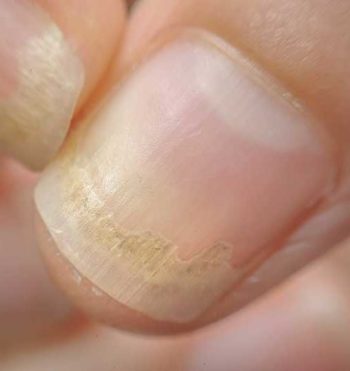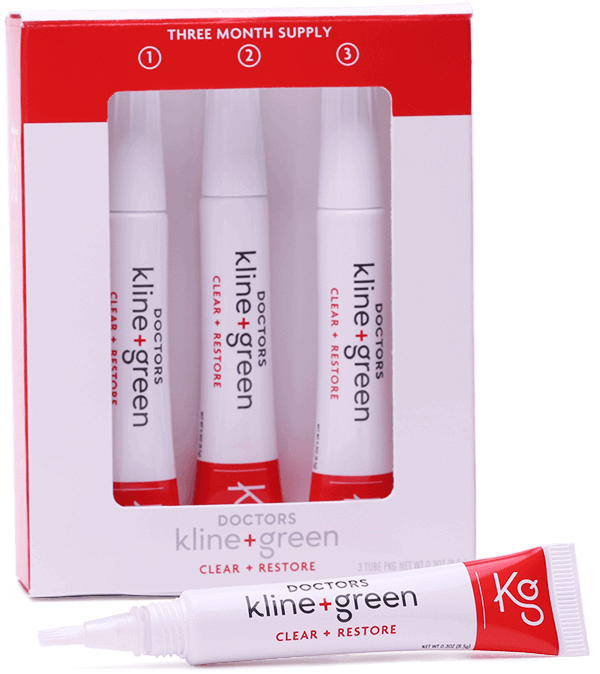How To Prevent Toenail Fungus
No one wants to experience toenail fungus (also called onychomycosis). However, it is relatively...
Onychomycosis is a nail disease and a fungal infection of the nail. It is also known by the alternative name, tinea unguium. The simple name for this condition is nail fungus and it can affect both the toenail and the fingernails. Toenail fungus is more common, but fingernail infections are also possible.
There are different types of onychomycosis. Distal subungual onychomycosis is the most common and infects the nail via the nail bed and underneath the nail plate. White superficial onychomycosis can make the nail a white color but it is a less common form of onychomycosis. Proximal subungual onychomycosis is another form of onychomycosis but it is less common in healthy patients. This attacks the nail unit through the proximal nail fold.

There are a range of symptoms associated with toe fungus and these include:
Nail discoloration – the nail can turn white or yellow. Early symptoms of nail discoloration may impact the edges of the nail, which is where the fungal nail infection usually starts.
Thickening of the nail – another common symptom associated with nail fungus is the thickening of the nail.
Separation of the nail from the nail bed – another issue that onychomycosis can cause is the separation of the nail from the bed (the technical name for this is onycholysis). The nail itself can become detached from the nail bed and eventually fall off.
A bad smell – Another potential symptom of nail fungus is that the toes and nail can smell foul.
The nail becomes brittle and frayed – a nail affected with onychomycosis may also become brittle, split and become frayed around the edges. This raggedy appearance can be a sign that the nail is infected with a nail fungus.
Nail dystrophy – This is a change in the normal make up of the nail plate where it can become discolored or distorted. Onychomycosis is one of the causes of this issue.
Total dystrophic onychomycosis is the most advanced stage of onychomycosis and can take many years to develop. However, it can be hard to treat at such an advanced stage when the patient is susceptible to a range of other illnesses, diseases, nail and toenail infections at this point. So this can be considered a serious complaint.
If you’re not sure if you have a nail fungal infection then see a dermatologist, or even another type of doctor should be able to help and recommend an antifungal therapy if required.
Onychomycosis is spread as a fungus and the main fungus group that spreads nail fungus is called Dermatophytes. The reason this fungal group is most likely to cause nail fungus is that these fungi require keratin for growth. Keratin is a substance that is found in nails among other areas of the body. Aspergillus (mold) and Candida albicans (a yeast) can also cause fungal infections of the nail. Candidiasis is a fungal infection that is caused by any of the Candida yeasts.
Other fungal conditions such as athelete’s foot (tinea pedis) can both cause nail fungus, and also be caught from nail fungus. Athlete’s foot (caused by Trichophyton rubrum or t rubrum) is a condition where fungus grows between the toes. Since it is in close proximity to the toenail the conditions can often spread between each other and is a common cause of nail fungus. Dermatophytosis (ringworm) is another fungal infection that can start as one kind of infection and migrate to other areas of the body such as the nail.
Risk factors such as old age can also increase the chances of catching a fungal nail infection. Other health issues can also be a contributing factor to nail disorders. You are at an increased risk if you suffer from diabetes, or have a compromised immune system.
Walking barefoot in damp communal areas can also increase the risk of catching athlete’s foot. Typically, examples include gyms, shared showers, and swimming pools. Wearing flip flops can decrease this risk factor.
There are a range of dermatology treatments available for fingernail and toenail onychomycosis. There are topical treatments that can be applied to the affected nail. Often these are topical antifungal medications that can be applied to the infected area itself.
Oral antifungal agents can also be taken as another way to treat an infected nail. One example of an oral antifungal drug is Terbinafine (sold under the name: Lamisil). Oral Terbinafine is not always recommended for all individuals since side effects can cause some liver problems. Pregnant women should also avoid it. Terbinafine is also available as a topical agent (cream and ointment) but this is not effective as a fungal nail treatment. So as a topical therapy it should not be used to treat nail fungus. Nail lacquers such as Amorolfine and topical treatments such as Tavaborole can help.
Cure rates are excellent when treated, but it is common for nail fungus to return. Often this is caused by wearing shoes that were worn whilst infected with the fungus.

Treat toenail fungus and fingernail fungus symptoms today with Clear + Restore